Reaching the Unique Markets
Not every niche is for every jeweler, but there are two product categories with proven track records and enormous growth potential, that provide jewelers with a competitive edge worth exploring: men’s and youth jewelry.
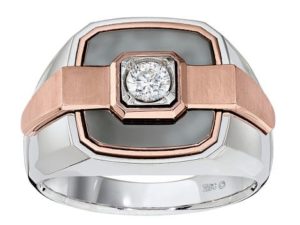 Men’s jewelry is hailed the fastest growth market in the jewelry category. According to Statista, men’s jewelry generated a sales value of $3.3 billion and watches 3.1 billion in the U.S. in 2014, the top two men’s accessories. In the 12 months ending May 2014, sales of men’s accessories grew 9%, reaching $13.6 billion and capping a two-year period that saw 13% growth, says the NPD Group.
Men’s jewelry is hailed the fastest growth market in the jewelry category. According to Statista, men’s jewelry generated a sales value of $3.3 billion and watches 3.1 billion in the U.S. in 2014, the top two men’s accessories. In the 12 months ending May 2014, sales of men’s accessories grew 9%, reaching $13.6 billion and capping a two-year period that saw 13% growth, says the NPD Group.
A proven bestseller, children’s jewelry offers relationship building and year round sales opportunities for gifters and future purchasers, part of the $11 billion children’s apparel and accessories business. Cites theguardian.com, “Children’s Fashion: Small People, Big Business,” “social factors such as a rapidly increasing birth rate, parents having children later in life and a glut of baby-boomer grandparents with more disposable income than at any point in history have combined to make childrenswear a highly lucrative business.”
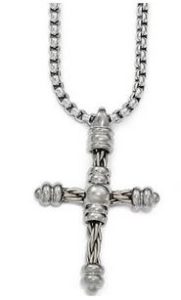
Man’s World
Tom Kalenderian, executive vice president and general merchandise manager, Barney’s New York, raved to thebusinessoffashion.com that men’s jewelry is a key growth area in the department store’s overarching strategy to grow the men’s accessories business. “The new-found interest in men’s jewelry is a lasting trend. I see growth potential and a need to continue to challenge our buyers to find new, exclusive designs to satisfy demand from this sophisticated consumer.”
The clear trend in men’s jewelry when gold became expensive was the use of alternative metals, cites Jonathan Goodman Cohen, IBGoodman, Newport, Kentucky. “From tungsten and stainless steel to titanium and exotic alloys, alternative metals are staples in men’s jewelry. It was a logical progression, as dress became more casual, and also with the popularity of white metals. Because these metals are more affordable, and mixed with materials like leather, rubber, wood, and enamel, there has been innovation and creativity in design.”
The bread and butter of the men’s category is wedding bands, says Karen Crowe, marketing/merchandising, Quality Gold, Fairfield, Ohio. Among the top styles, she cites its Chisel® brand titanium, stainless steel, Black Ti™, ceramic and cobalt designs in plain bands, and with carbon fiber and 14K gold inlays, and diamond and CZ accented; and Edward Mirell brand titanium and Black Ti™ rings with silver, memory cable and 14K gold inlays, and diamond and spinel accents. She also sees sales trending for its custom 10K and 14K gold bands.
Cohen concurs, citing strength in gold and diamond bands, noting that ¼ to ½ total carat weight was the favorite, now its ½-1 carat. “We do a good business in men’s diamond rings. We see growing demand at higher price points. There’s great opportunity for jewelers to do more.” Besides white diamonds, men are keen on black and brown diamonds, and gems like sapphire, garnet, and black onyx, says Scott Rauch, president of SHR Jewelry Group/S.D.C. Designs, New York.
Beyond bands, bracelets are a big business. “Men are piling on their bracelets,” says Rauch, “stacking different types like chain, leather and gem beads.” He says men also are layering pendants—crosses and tags with symbolic/spiritual messages—adding on to their look.
Thanks to the push for 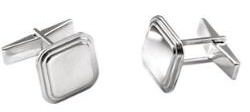 personalization, engraveable styles, especially cuff links remain popular and there has been an uptick in signet rings, reports Alix Gonsoulin, director of fine jewelry, Stuller, Lafayette, Louisiana. IB Goodman also does well with signet styles and Masonic rings, and is expanding its cufflink offerings, as well as innovating designs for money clips and key chains. Cohen says ensembles are important, as men like to match accessories.
personalization, engraveable styles, especially cuff links remain popular and there has been an uptick in signet rings, reports Alix Gonsoulin, director of fine jewelry, Stuller, Lafayette, Louisiana. IB Goodman also does well with signet styles and Masonic rings, and is expanding its cufflink offerings, as well as innovating designs for money clips and key chains. Cohen says ensembles are important, as men like to match accessories.
Kidding Around
Parents, grandparents, and relatives spend big bucks on the children they love. According to the NPD Group, children’s apparel and accessories is the strongest consumer category in the 0-14 age group. With 65 million kids 14 and under by 2016, cites the U.S. Census, this demographic is a critical one to nurture.
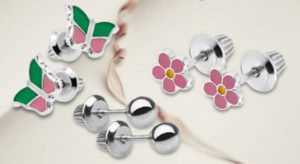 Not only are kids gifted jewelry, they’re also buying it, says Kate Peterson, president of Performance Concepts, Montgomery Village, Maryland. “I was shocked by a statistic that the average 16 year old walks through a shopping center with about $57 cash. We’re encouraging retailers to go after the young fashion market as the first step in building long-term loyalty. With the average age of the first time bridal couple at an all time high, the engagement ring is no longer the first fine jewelry purchase for most. If you don’t have them by the time they’re ready for the engagement ring, you’ll likely not have a shot at that sale.”
Not only are kids gifted jewelry, they’re also buying it, says Kate Peterson, president of Performance Concepts, Montgomery Village, Maryland. “I was shocked by a statistic that the average 16 year old walks through a shopping center with about $57 cash. We’re encouraging retailers to go after the young fashion market as the first step in building long-term loyalty. With the average age of the first time bridal couple at an all time high, the engagement ring is no longer the first fine jewelry purchase for most. If you don’t have them by the time they’re ready for the engagement ring, you’ll likely not have a shot at that sale.”
Children’s jewelry is a department that attracts people, people who aren’t even looking for it, cites Audrey Robbins, Marathon, Attleboro, Massachusetts, known for the Kiddie Kraft brand. Bestsellers for fine jewelers include quality design in silver, gold and gold plated with small accents in diamonds, birthstones and enamel. “People want nicer things for their children; a good quality gift that’s well crafted. We’re known for our special earring backs enclosed with threaded safety catch that make them comfortable and secure on the ear. Details matter.”
Classic jewelry like diamond studs, huggie hoops, guard and hinged bangles, and religious pendants are bestsellers cites Robbins. Girls also love pearls, inspiring Marathon to launch a collection of small pearl studs and pearls on chain necklace and bracelet. Imperial Pearl and Honora both have successful programs for pearl girls. Imperial’s Pearl-by-Pearl build a pearl necklace “builds the connection with the family jeweler to symbolize life events,” tells Kathy Grenier, marketing director for the Providence, Rhode Island pearl house. And Honora Girls, a Richline brand, New York, has cute box sets of candy color pearl studs and ensembles, small pendants, and bracelets with silver and leather.
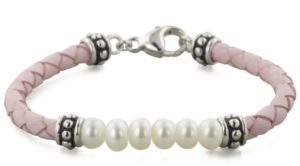 It’s all about the basics, touts Gonsoulin. “Our evergreen area is youth birthstone jewelry. It’s a perfect gift for a variety of ages. Folks are always looking for it. It’s an easy sell for birthdays, holidays, and special milestones.” Moreover, a tiny diamond set in a silver design is a great way to get children excited about jewelry, imparting a sense of ownership, shares Amanda Gizzi, director of public relations and special events for the Jewelers of America. Peterson notes that the “About Me” mentality, particularly in people under age 20, calls for products that allow for personal expression like monogram or name bars or symbolic displays.
It’s all about the basics, touts Gonsoulin. “Our evergreen area is youth birthstone jewelry. It’s a perfect gift for a variety of ages. Folks are always looking for it. It’s an easy sell for birthdays, holidays, and special milestones.” Moreover, a tiny diamond set in a silver design is a great way to get children excited about jewelry, imparting a sense of ownership, shares Amanda Gizzi, director of public relations and special events for the Jewelers of America. Peterson notes that the “About Me” mentality, particularly in people under age 20, calls for products that allow for personal expression like monogram or name bars or symbolic displays.
Spotlight It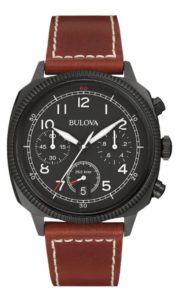
What’s important for jewelers to remember when carving out these niche markets is to carve out special areas that give them their own identity.
In what is typically a female environment, it’s especially important for jewelers to create a men’s department. “Men’s watches, accessories and wedding bands should all be in one area, not an afterthought mixed in with women’s jewelry,” says Rauch. He advises jewelers stock a selection of accessories including ties and belts to give male clients options that work together.
In fact, with watches, a top selling category in men’s accessories, benefits abound for jewelers who have an exciting selection of watches—a great anchor along with wedding bands for a strong men’s department. “Most men own a collection of watches and the jeweler can benefit greatly by showing a variety of brands and styles in their store,” hails Fae Druiz, vice president public relations, Bulova, New York City. “Watches attract new customers!”
Crowe suggests cool tones, masculine displays, and props like sports accents to draw attention. “This will also draw the youth market, especially in mall stores. You have to give them that visual that will bring them past the lease line.” Moreover, reaching men online and through social media is vital. To help retailers, IBGoodman for example links them into its digital catalogs, and its social media campaign to target customers in local markets.
The same 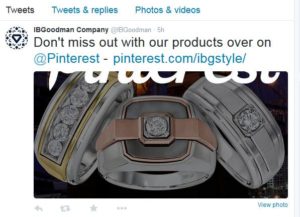 philosophies apply when creating a children’s jewelry section. “Pay attention to where product is placed,” says Gonsoulin. “Jewelers have the opportunity to call this category out in a special, playful way as per the audience.” Gizzi advises the space be fun, inspiring, and encouraging social media sharing.
philosophies apply when creating a children’s jewelry section. “Pay attention to where product is placed,” says Gonsoulin. “Jewelers have the opportunity to call this category out in a special, playful way as per the audience.” Gizzi advises the space be fun, inspiring, and encouraging social media sharing.
When exploring niche markets, jewelers should keep their sights on the big picture. “It’s not so much about finding a perfect category or area,” says Peterson, “as it is clearly articulating your brand identity and being consistent with everything you do. We work to get our retail clients to look hard at who they are, why they are, and what they want to stand for in their market—then build the staff, product selection, and policies and practices to support that vision.”







